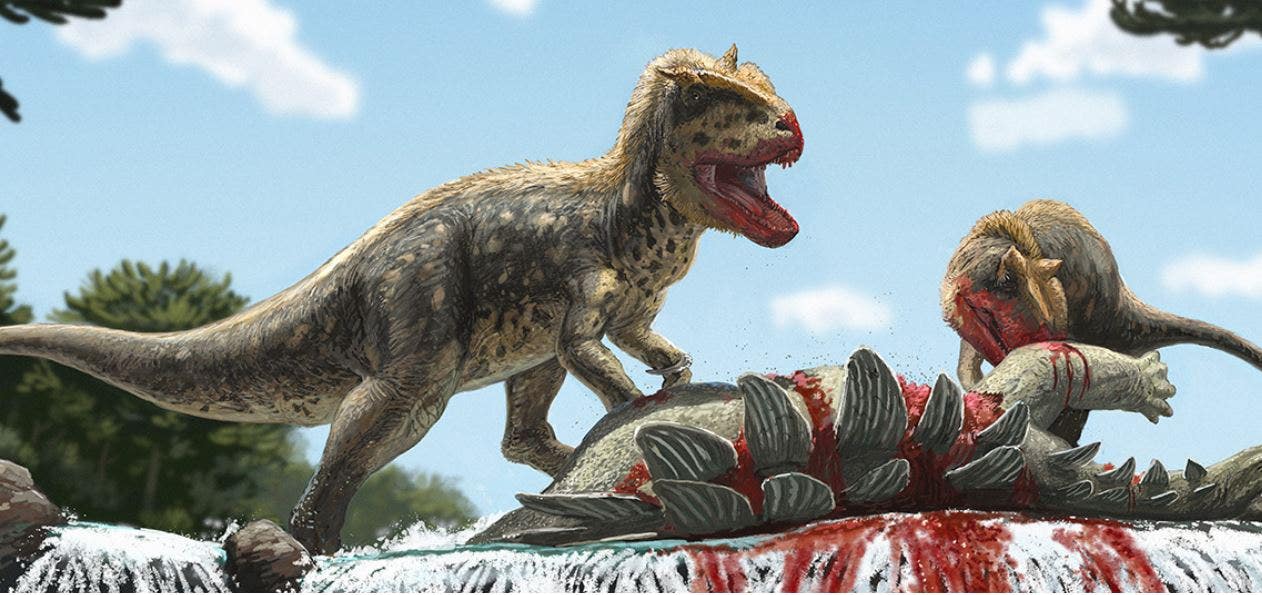One crawled across the rain-drenched ground of what is now Texas more than 270 million years ago, possibly feasting on fast-moving insects. The other endeared himself to millions as the banjo-playing roving newscaster, and reluctant beau of Miss Piggy, known as Kermit the Frog.
Now, they share a name.
On Thursday, scientists announced that they had named a newly identified ancient ancestor of modern-day amphibians Kermitops gratus in honor of Kermit the Frog.
Although it couldn’t sing “Rainbow Connection” or deliver the news, the salamander-like species seemed to bear a striking resemblance to the beloved Muppet, said Calvin So, a Ph.D. student in the department of biological sciences at George Washington University, who helped name it.
The combination of bones in the eye socket gave it a “bug-eyed appearance” like Kermit’s, and its slightly crushed, three-centimer-long fossilized skull appeared to have “a lopsided smile,” reminiscent of Kermit’s shy grin, Mx. So said.
“It really made it look to us that Kermit was smiling at us,” said Mx. So, the lead author of a paper describing the new species, which was published on Thursday in the Zoological Journal of the Linnean Society. The name combines “Kermit” and the Greek suffix “-ops,” which means face.
The fossilized skull was unearthed near Lake Kemp in Texas in 1984, Mx. So said. It was sitting in the collections of the Smithsonian National Museum of Natural History in Washington until 2021, when one of Mx. So’s co-authors, Arjan Mann, and a few other paleontologists noticed it and recognized that it might be a new species, Mx. So said.
Mx. So said the snout was longer than the back of its skull, which was very different from other fossil amphibians of its kind. The shape might have made the species especially adept at catching fast-moving insects for food, Mx. So said.
“It increases our knowledge of the diversity of amphibians at the time,” they said. And the name, Mx. So said, could get people interested in prehistoric creatures other than dinosaurs.
“I did want to garner attention, and change the way people relate to science and fossils,” Mx. So said. “It would be really great to have a lot more people really joining the investigation into amphibian origins because it’s an area of the tree of life that is not very well studied.”
The species was only the latest scientific discovery to emerge from obscurity bearing a famous name.
Last year, scientists at a German research institute who discovered that certain bacterial compounds kill fungus named them keanumycins, in honor of the actor Keanu Reeves in his starring role in the thriller franchise “John Wick.”
Scientists have named insects after Arnold Schwarzenegger and RuPaul, while a species of dinosaur was named Dracorex hogwartsia, or the dragon king of Hogwarts, in honor of the Hogwarts School from the Harry Potter series by J.K. Rowling, according to the Natural History Museum in London.
Muppets, too, have served as inspiration. A trilobite was named after the grouchy duo of Statler and Waldorf, and a tube-dwelling spider was named in honor of Gonzo, the museum said.
Despite Mx. So’s enthusiasm for the new species, they said they were not always a big fan of the Muppets. “Personally,” Mx So said, “I thought some of the Muppets were a little scary.”






